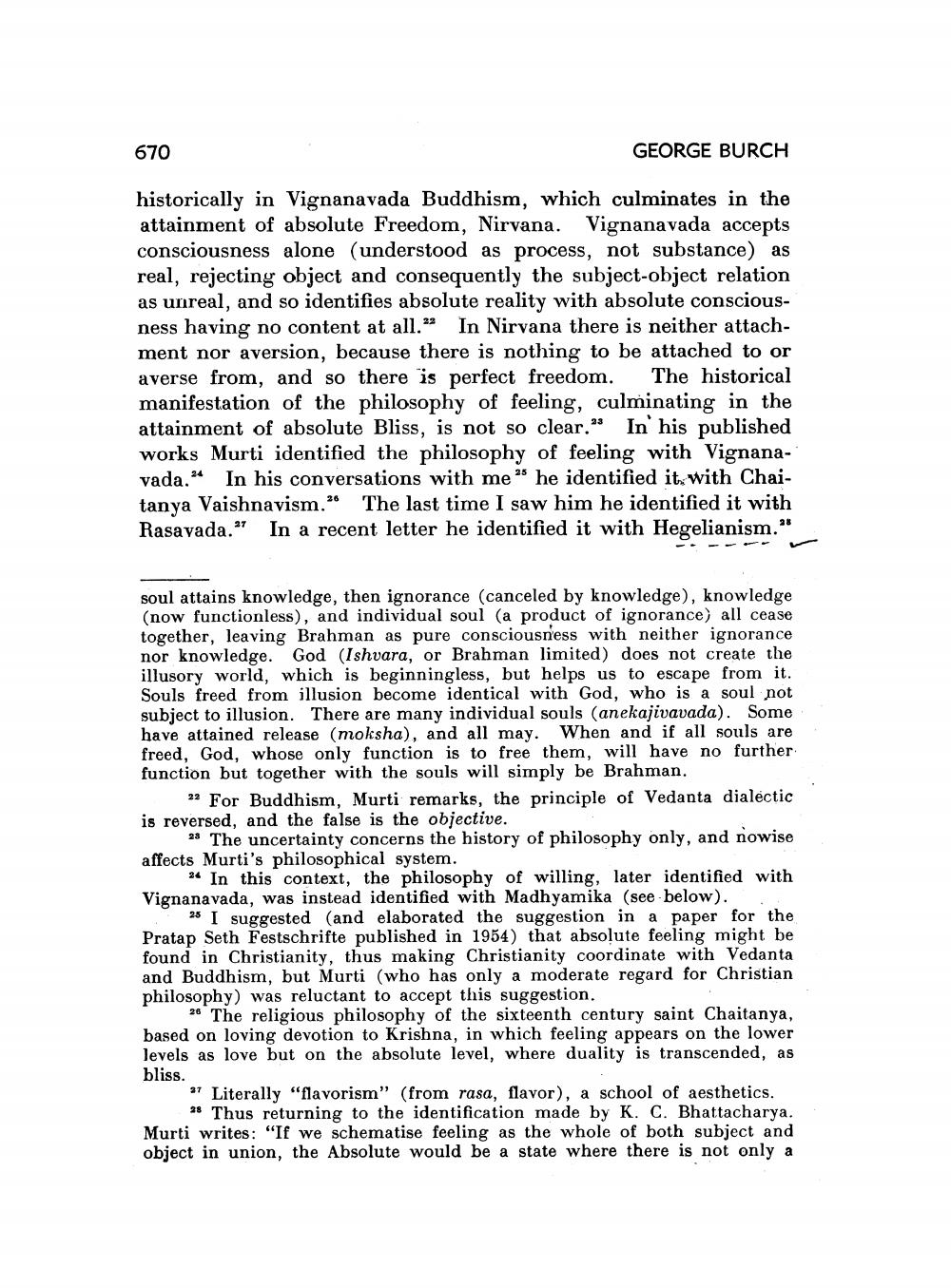________________
670
GEORGE BURCH
historically in Vignanavada Buddhism, which culminates in the attainment of absolute Freedom, Nirvana. Vignanavada accepts consciousness alone (understood as process, not substance) as real, rejecting object and consequently the subject-object relation as unreal, and so identifies absolute reality with absolute consciousness having no content at all.“ In Nirvana there is neither attachment nor aversion, because there is nothing to be attached to or averse from, and so there is perfect freedom. The historical manifestation of the philosophy of feeling, culminating in the attainment of absolute Bliss, is not so clear.” In his published works Murti identified the philosophy of feeling with Vignanavada.” In his conversations with me” he identified it with Chaitanya Vaishnavism." The last time I saw him he identified it with Rasavada. In a recent letter he identified it with Hegelianism."
soul attains knowledge, then ignorance (canceled by knowledge), knowledge (now functionless), and individual soul (a product of ignorance) all cease together, leaving Brahman as pure consciousness with neither ignorance nor knowledge. God (Ishvara, or Brahman limited) does not create the illusory world, which is beginningless, but helps us to escape from it. Souls freed from illusion become identical with God, who is a soul not subject to illusion. There are many individual souls (anekajivavada). Some have attained release (moksha), and all may. When and if all souls are freed, God, whose only function is to free them, will have no further function but together with the souls will simply be Brahman.
? For Buddhism, Murti remarks, the principle of Vedanta dialèctic is reversed, and the false is the objective.
23 The uncertainty concerns the history of philosophy only, and nowise affects Murti's philosophical system.
** In this context, the philosophy of willing, later identified with Vignanavada, was instead identified with Madhyamika (see below).
25 I suggested (and elaborated the suggestion in a paper for the Pratap Seth Festschrifte published in 1954) that absolute feeling might be found in Christianity, thus making Christianity coordinate with Vedanta and Buddhism, but Murti (who has only a moderate regard for Christian philosophy) was reluctant to accept this suggestion.
26 The religious philosophy of the sixteenth century saint Chaitanya, based on loving devotion to Krishna, in which feeling appears on the lower levels as love but on the absolute level, where duality is transcended, as bliss.
*7 Literally "flavorism" (from rasa, flavor), a school of aesthetics.
28 Thus returning to the identification made by K. C. Bhattacharya. Murti writes: "If we schematise feeling as the whole of both subject and object in union, the Absolute would be a state where there is not only a




